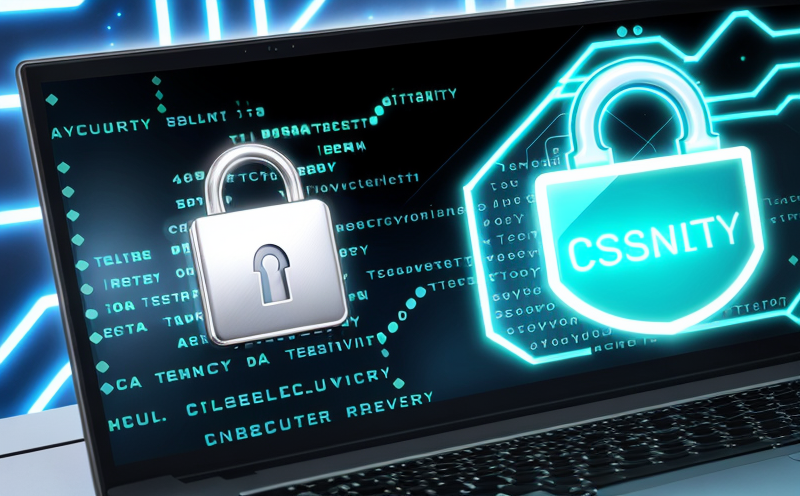UL 2900-2-3 Cybersecurity for Consumer Smart Devices
The UL 2900-2-3 standard is a comprehensive framework designed to ensure consumer smart devices are secure and resilient against cyber threats. This standard focuses on the cybersecurity requirements necessary to safeguard smart devices from unauthorized access, data breaches, and other malicious activities. Compliance with this standard not only protects end-users but also helps manufacturers meet regulatory expectations.
As part of the UL 2900 series, UL 2900-2-3 specifically addresses the cybersecurity aspects that are critical for consumer smart devices. These include firmware security, secure boot processes, encryption methods, and secure configuration protocols. By adhering to this standard, manufacturers can significantly enhance the overall security posture of their products.
The importance of cybersecurity in smart home and IoT (Internet of Things) devices cannot be overstated. With an increasing number of connected devices entering households, the risk of vulnerabilities being exploited by hackers also rises. UL 2900-2-3 helps mitigate these risks by providing a robust set of guidelines that address potential security weaknesses.
Compliance with this standard is crucial for both legal and reputational reasons. Many regions have implemented regulations mandating cybersecurity measures for smart devices, making compliance essential to avoid penalties or market exclusion. Additionally, consumers are becoming more aware and demanding when it comes to the privacy and security of their connected products. A brand that demonstrates commitment to cybersecurity can build trust with its customers.
The UL 2900-2-3 standard is applicable to a wide range of consumer smart devices including home automation systems, wearable technology, smart appliances, and other IoT-enabled gadgets. Its comprehensive approach ensures that all aspects of the device’s lifecycle are covered—from design and manufacturing through to end-of-life disposal.
UL 2900-2-3 aligns with international standards such as ISO/IEC 27001 for information security management systems, which further reinforces its importance in the global market. By adhering to this standard, manufacturers can position their products at the forefront of cybersecurity innovation.
The testing process under UL 2900-2-3 involves several key steps. Initially, the device must undergo a thorough risk assessment to identify potential vulnerabilities. This is followed by rigorous testing to validate that the device meets all specified requirements. Finally, successful completion of these tests results in certification, providing assurance to both manufacturers and consumers about the product’s security capabilities.
UL 2900-2-3 plays a pivotal role in fostering trust between consumers and smart devices. In today's connected world, where technology is advancing rapidly, ensuring that our devices are secure against emerging threats is paramount. This standard helps bridge the gap between cutting-edge innovation and consumer protection.
By embracing UL 2900-2-3, manufacturers can not only comply with regulatory requirements but also enhance their brand reputation by demonstrating a strong commitment to cybersecurity. As we move towards an increasingly interconnected future, this standard will undoubtedly continue to play a crucial role in safeguarding the digital landscape.
Scope and Methodology
| Test Area | Description |
|---|---|
| Firmware Security | Verification of secure boot processes, encryption methods, and firmware updates. |
| Data Encryption | Evaluation of data encryption algorithms used within the device. |
| Secure Configuration Protocols | Testing for secure configuration protocols to prevent unauthorized access. |
| Vulnerability Scanning | Identifying and addressing potential vulnerabilities through comprehensive scanning. |
| Penetration Testing | Simulating real-world attacks to identify weaknesses in the device's security measures. |
| User Authentication | Evaluation of user authentication mechanisms for secure access. |
| Data Integrity | Ensuring that data remains intact and is not tampered with during transmission or storage. |
Why Choose This Test
Comprehensive Coverage: UL 2900-2-3 ensures all critical security aspects are addressed, providing a holistic approach to cybersecurity.
Regulatory Compliance: Helps manufacturers meet stringent regulatory requirements and avoid potential fines or market exclusion.
Enhanced Trust: Demonstrates commitment to consumer safety and privacy, thereby enhancing brand reputation.
Competitive Edge: Establishes a benchmark for cybersecurity that can set your product apart in the competitive smart device market.
Potential Cost Savings: Early identification of vulnerabilities through testing can save on repair costs and recall expenses.
Market Access: Certification under UL 2900-2-3 opens doors to markets that require stringent cybersecurity measures.
Competitive Advantage and Market Impact
In a world where technology is rapidly evolving, the demand for secure smart devices is higher than ever. UL 2900-2-3 provides manufacturers with the tools they need to stay ahead of the curve by ensuring their products meet or exceed industry standards.
This standard not only helps protect consumers but also ensures that manufacturers are aligned with global regulatory trends. By adopting this framework, companies can anticipate future challenges and adapt proactively, giving them a significant competitive advantage in the market.
The certification under UL 2900-2-3 is particularly valuable for brands aiming to capture a share of the expanding smart home and IoT market. As more consumers become aware of cybersecurity risks, those who prioritize security will likely gain an edge over competitors who do not.
Moreover, this standard can be used as a marketing tool to communicate your brand’s commitment to safety and privacy, attracting tech-savvy customers who value these attributes highly. This strategic approach can lead to increased sales and customer loyalty.
In conclusion, UL 2900-2-3 is not just about compliance; it's about building trust and confidence in the products you offer. By choosing this test, manufacturers can position themselves as leaders in cybersecurity and data privacy, ultimately driving market success and growth.





